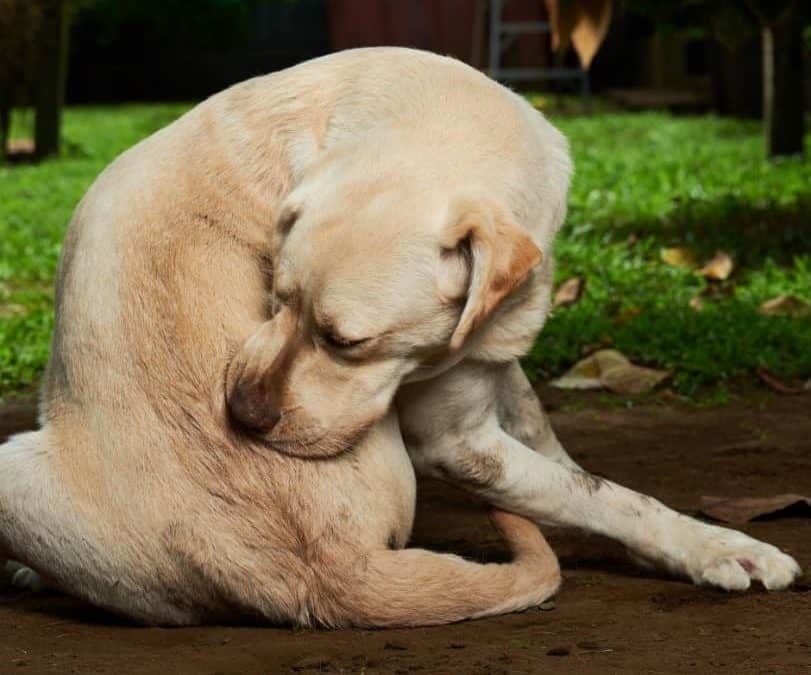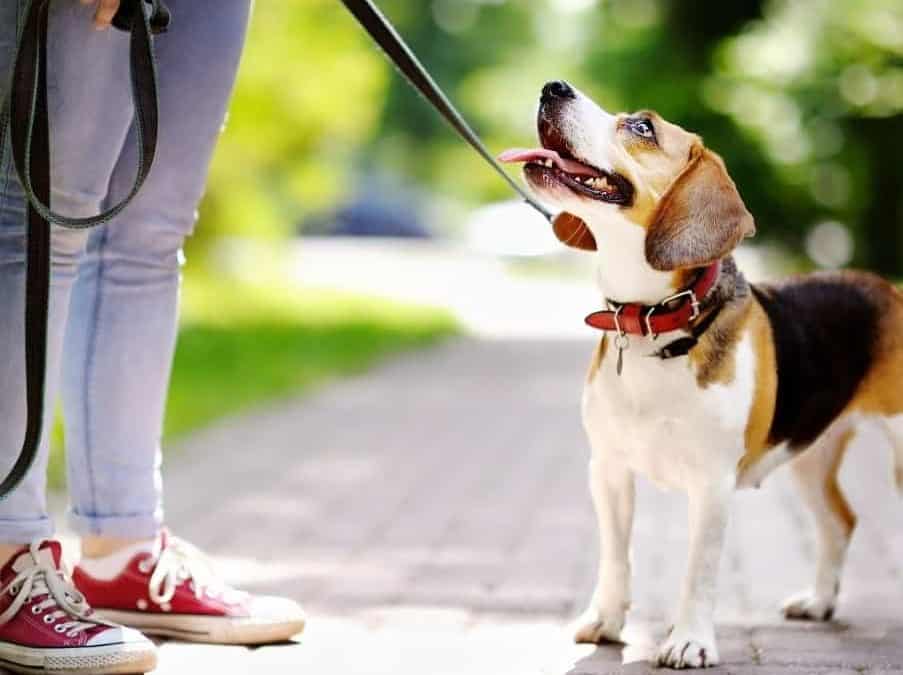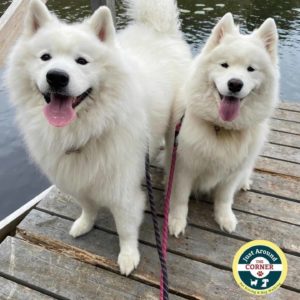
by Pam Ranheim | Jul 22, 2020 | cats, dog walking, dogs, pet care, pet health, pet sitting, pets
Your backyard is one of the safest places for your pup to spend their time, but it can also become deadly in the blink of an eye. Summer days with high humidity make the conditions ideal for dangerous plants and mushrooms to grow. If you are a dog owner, you know “everything goes in the mouth” especially new things they find in their personal space. Well, one mushroom or toxic plant in the mouth, when you are not looking, could become a deadly situation in a matter of hours. However, there are simple steps you can take to prevent your pet and you from dealing with the terrible effects of poisonous plants and mushrooms.

How to prevent poisonous plant ingestion
Clear ALL mushrooms in your yard.
When in doubt, take it out! Better to be safe than sorry so if you see mushrooms you are not sure about in your yard go ahead and dig them up. Be sure to pull them up by the “root “ (or mycelium) if possible, to help prevent further growth. This will not guarantee that they will not come back so keep an eye out. If you wish to keep non-harming mushrooms in your yard educate yourself on the types of mushrooms and their qualities. Learn more here: Types of toxic mushrooms
Be on the lookout for mushrooms outside of your yard too!
If mushrooms can grow in your well-manicured yard they can certainly grow along trails, sidewalks, and those hidden places your pet loves to sniff out for a potty break. Keeping an eye out while on walks, hikes and in new places (even a friend’s yard) is key to keeping your pet safe and plant poison free!

Know which plants are toxic to pets
While mushroom awareness is particularly important due to their quick appearance, easy access to pets, and difficulty to identify, they are not the only plants you should be on the lookout for. The same precautionary actions mentioned above should be taken with any poisonous plant. Here are some of the most common plants to be aware of.
• Azalea
• Hydrangea
• Ivy
• Daffodil
• Poinsettia
• Foxglove
• Tulip
• Lily
• Hyacinth
To name a few… Many of these plants are commonly found in flower arrangements as well as flower gardens. If you purchase flowers or plants or are gifted an arrangement be sure to double check the contents before leaving it within reach of your fur babies. Check out a complete list of toxic and non-toxic plants here: https://www.aspca.org/pet-care/animal-poison-control/toxic-and-non-toxic-plants
Identifying a poisoned pet
While some symptoms of poisoning are very evident not all signs come on at once or right away. If you suspect your pet has ingested part or all of a poisonous plant be on the lookout for these telltale signs.
- Vomiting
- Diarrhea
- Blood
- Fever
- Excessive drooling
- Weak/Uncoordinated Movements
- Seizures
- Strong heartbeat
If your pet exhibits any of these signs, contact your vet or poison control (800-222-1222) right away. Time is critical when getting care for poison.
Have a plan!
As a pet parent we hope to never deal with something so terrible as poison ingestion but nonetheless we must be prepared.
- Put important phone numbers in your contacts AND in a prominent place like your refrigerator for easy access. Regular vet, emergency vet and Poison Control are a few numbers to have on hand.
- Identify the plant involved and take a sample with you to your emergency location.
- Keep your pet’s medical records in a convenient location. The more information you can provide your pet’s medical professional the better they will be able to care for them.
- There is no home remedy you can offer your pet for this circumstance so get in touch with a medical professional ASAP
With so many toxic plants out there prevention can feel overwhelming, but with a few precautionary actions poisonous plant ingestion in pets is 100% preventable.
• Know what is in your yard
• Remove all dangerous plants from spaces your pet occupies
• Regularly check your pets’ spaces for new growth/potential danger
• Be familiar with the signs of a poisoned pet
• Have a plan of action
If you are having trouble identifying a plant in your yard a veterinarian or pet care professional may be able to help you. Call your vet or visit www.aspca.org for more information.
Just Around the Corner offers daily Dog Walking and Pet Sitting in Plymouth, MA. To learn more about how Just Around the Corner can help, check out our Services Page. You can also Contact Us for more information. Be sure to Like us on Facebook and Follow us on Instagram!

by Pam Ranheim | Jul 8, 2020 | cats, dogs, pet care, pet health, pet sitting, pets, Plymouth MA
Prevent Fleas and Ticks for your Dog and Cat
Is there anything worse than finding a tick behind Fluffy’s ear? Or that moment when you see a flea jump from Bruno’s tail right onto the living room rug? YUCK! Keeping our pets flea and tick free is part of our duty as a pet parent but it is not always as simple as year-round treatment. These 6 tips will keep your dog and cat flea- and tick-free both indoors and out all year long.
Why are Fleas and Ticks bad?
Besides being just plain yucky, fleas and ticks are parasites that may cause serious harm and discomfort to our precious fur babies. They transmit dangerous diseases such as Lyme disease, Dog Ehrlichiosis and let us not forget…the Bubonic Plague (Flea transmitted disease). These sneaky parasites are out to get our furry friends, but with a few simple steps your pet and your home will remain flea- and tick-free!

6 tips to prevent flea and ticks
- Year-round treatment
A monthly pill or collar to prevent fleas and ticks for your dog and cat is a must year-round. No matter what region you live, continuing treatment through the winter is extremely important. These parasites survive temperatures as low as freezing (30 degrees). The unpredictable weather these days makes remaining diligent with your pet’s treatment more important than ever. All it takes is a few winter days in the 30’s for fleas and ticks to be right back to their pesky ways. No bones about it, continue your pet’s treatment 365 days a year.
- Throw out old preventatives
If you have old flea and tick treatments from previous years or other pets it can be tempting to use them on your current pet. However, most treatments have specific expiration dates and become ineffective over time. These parasites evolve and often become immune to older products. Always check with your Vet for the most effective brands/products available to you. In addition, be sure to use pet specific products, canine products for dogs and feline products for cats. Swapping one for the other can cause serious harm to your pet.
- Keep backyard clean
Our own backyard is the number 1 place pets contract fleas and ticks. Keeping the grass, trees and shrubs trimmed will keep your yard from looking too appealing to fleas and ticks. A regular mowing and grooming will continually disrupt the possibility for these sneaky parasites to make their home in your yard.
- Clean home regularly
Flea eggs can stay alive all year long in your home, even through the cold months. Once eggs are laid, they can multiply as quickly as 100 per DAY! A thorough routine cleaning will keep your home flea free. There are a few things you do not want to miss during your cleaning that specifically target removing/keeping fleas at bay.
- Washing pet and human bedding in hot water
- Cleaning curtains, couches and other fabric materials that are a playground for fleas
- Dispose of vacuum bag/empty canister (outside) after EVERY use. Flea eggs can continue to hatch and multiply even after being vacuumed.
- Spray/clean carpeted areas frequently
- Do regular tick checks
Looking for more peace of mind when it comes to wondering if Fido has a tick? Do a regular tick check yourself. Start this when your dog is just a puppy or your cat is a kitten to get them used to the unique full body search that an older pet may otherwise not be comfortable with. Regular baths will also help to prevent fleas and ticks. Bath time is also a fantastic time to do a flea/tick check.
- Regular Vet checkups
Checking in with the professionals will ensure you have your pet on the best preventative plan possible. They will check the efficiency of your current program and make sure your pet remains on the safe track for being parasite free! A thorough checkup provides the utmost peace of mind for a pet parent, which is priceless. Do not delay, schedule a checkup with your pet’s veterinarian today.

Keeping your dog and cat flea and tick free makes for a happier, healthier pet. When your pet is armed with an effective year-round treatment with a nicely manicured yard to play in, a clean bed to rest their head, smelling fresh from routine baths, and gets a gold star from their vet check fleas and ticks don’t stand a chance! These 6 tips will have your pet saying THANK YOU again and again.
Do you have a best kept secret for preventing fleas and ticks in your pet(s)? Share with us in the comments!
Just Around the Corner offers daily Dog Walking and Cat Sitting in Plymouth, MA. To learn more about how Just Around the Corner can help, check out our Services Page. You can also Contact Us for more information. Be sure to Like us on Facebook and Follow us on Instagram!

by Pam Ranheim | Jul 1, 2020 | cats, dogs, pet care, pet health, pets
Hydration is a crucial part of keeping your pet healthy, especially during these hot summer months. Hydrating your pet is so essential the US has declared the month of July National Pet Hydration Month. Did you know that your dog should drink 1 ounce of water per day for every pound of body weight? For large breed dogs that means a lot more water than the recommended 64 oz for humans every day.
Why do pets need more water than humans? It may come as a surprise, but dogs and cats are made up of 80% water, as opposed to the human 55-60%. This means it is 20-25% more likely for a pet to become dehydrated. How do I know if my dog/cat is drinking enough water? We understand it is not always easy to know exactly how much water intake your pet has had each day. Here are some important symptoms of dehydration to look out for.
- Loss of appetite
- Reduced energy levels
- Lethargy
- Heavy panting
- Sunken eyes
- Dry mouth/gums
- Loss of skin elasticity
If your pet experiences any of these symptoms try to entice them with a fresh bowl of water. Whenever possible monitor your pet’s water intake. In addition to watching for these symptoms, performing the skin elasticity test is a great way to detect if your pet is experiencing dehydration. If the symptoms persist/worsen you will want to give your veterinarian a call as medical attention may be needed.

Tips to keep your pet hydrated
Providing fresh water for your pet daily may sound like a no-brainer, but there are a few tricks that will ensure your pet stays hydrated even through the hot and dry season.
- Keep water bowls clean
Your pet may not seem to mind day old water but a freshly clean bowl with fresh water is ALWAYS more enticing than a slimy, lukewarm dish. Cleaning your pet’s dish daily will also keep the harmful, biofilm at bay!
- Use more than one water dish
Increase opportunities for your pet to drink water by placing a few water dishes throughout your home as well as in several outdoor areas. This will help to up their water intake exponentially.
- Frozen Treats
Offer your pet frozen treats, such as ice cubes, frozen broth, or pet-healthy smoothies. These refreshing, fun treats keep your pet coming back for hydration again and again.
- Get a drinking fountain
While some dogs or cats may not mind standing water, others are far more interested in drinking from a bubbling fountain. Can you blame them? Drinking fountains often also filter the water which removes tastes and odors that may prevent your pet from drinking up.
- Add water to your pet’s food
This is an especially good idea for older pets. Start with a small amount of water until they feel comfortable with the change. You can safely add water to any type of pet food from kibble to canned food. It is a great way to up their hydration without them feeling like they are being forced to drink, drink, drink.

As always, our goal as pet parents is to have the happiest and healthiest pets possible. Knowing the signs of dehydration and tips for how to keep your pet hydrated will keep your fur baby living their best life all summer long. Just remember, every time you reach for a drink of water for yourself, think of your pet. Or, maybe keeping your pet hydrated will help you to stay hydrated too!
Click here to get a downloadable infographic reminder for Pet Hydration.
How are you keeping your pet hydrated this summer? Share your tips and tricks in the comments!
Just Around the Corner offers daily Dog Walking and Pet Sitting in Plymouth, MA. To learn more about how Just Around the Corner can help, check out our Services Page. You can also Contact Us for more information. Be sure to Like us on Facebook and Follow us on Instagram!

by Pam Ranheim | Jun 17, 2020 | dog walking, dogs, pet health, pets
We know you have many, many options for dog walkers. Knowing what questions to ask and when to ask them is the key to finding the perfect Dog Walker. Detailed questions allow you to match your dog with a walker that meets your needs and gives you peace of mind. That’s really what hiring a Dog Walker is all about, right? Knowing your dog is in the most capable hands possible for their needs on every single walk.
TIME SAVER: Are you a busy bee and don’t have time to read this, probably why you need a walker in the first place? Skip the read and download our FREE Dog Walker Question Guide to get started on your search for the best Dog Walker for you, today!
Before reaching out to your potential Dog Walker
Even before picking up the phone to inquire there are a few things you should know. From pricing to scheduling almost no Walker/Dog Walking company operates exactly the same. Your perfect match is out there, you just need a good understanding of what your needs are. Before you call answer these questions for yourself:
- What is your budget?
- What type of services does your dog need? Maybe Fido isn’t a huge fan of other dogs and needs a short solo stroll with only the Dog Walker. Does Lilly have so much energy anything less than an hour long group hike won’t do the trick? Get specific.
- Are you looking to have the same Dog Walker every visit or would you prefer Shadow to have the flexibility of having backup Dog Walkers?
- How much flexibility do you need with your schedule? Do you anticipate needing to cancel last minute frequently with the way your schedule works? Would a cancellation fee be a deal breaker?
- Is your dog anxious around new people/other dogs?
- Has your dog ever been home alone when someone they don’t know comes into the house? How does that go?
Answering these questions will put you in a great place to start your search for your perfect Dog Walker.

Inquiring about Dog Walking
Before you commit to a meet and greet there are questions to ask that will let you know pretty immediately if a Dog Walker has the expertise and credentials that you prefer. It is important to have a solid idea of what your expectations are going into a phone inquiry. Every pet owner is different and staying in tune with what works for you and your dog will give you a clear understanding when/if someone isn’t a good fit.
- What services do you offer?
- What are your prices?
- How long have you been in business?
- How many Dog Walkers work with you? If you are solo, is this your full-time job?
- Are you local?
- What areas/regions do you cover?
- Do you have a Meet and Greet with all of your clients?
- Can you supply 3 references or online reviews?
Keep in mind that the answers to these questions are only right/wrong based on your preferences. Some people may prefer to see a 10 year history of being in the business and 3 pages of references. Other owners and dogs may be totally comfortable with a part-time college student looking to earn some extra cash. Different strokes for different folks. Again, knowing what is right for you and your dog is the most effective way to sort through a list of local Dog Walkers.
Meet and Greet with your new Dog Walker
The greatest benefit of a Meet and Greet is being able to see how your dog responds to the person coming into your home. The way your dog and the walker react to each other may tell you all you need to know. Once everyone has met and things are going smoothly these questions will take it to the next level.
- Are you Pet First Aid and Pet CPR certified?
- How do you ensure the safety of the dogs you walk and those around them?
- What would you do if a dog got off his/her leash?
- Where will my personal information be stored?
- What is the procedure in the event of an emergency with my dog?
- What is the key policy? Giving someone access to your home and your pet is a privilege and should not be taken lightly.
During a meet and greet you want to make sure the physical aspects of your dog with the Dog Walker are cohesive. If they are unable to harness/leash your dog without the dog running to hide or baring teeth you may need to consider a few “trial visits”. If you just didn’t get a good vibe keep looking. There can be any number of reasons your dog doesn’t mesh with this particular Dog Walker.

The Dog Walk
Hiring a dog walker means trusting another person with your precious fur baby. You deserve peace of mind while you are away, knowing that your pup is in the most capable hands possible. Ask specific questions regarding the walk itself. The questions below will give you a better understanding of how each visit should/will look day in and day out.
- Are you able to feed and water my dog during your visit?
- Where will you walk my dog?
- Will they be in a vehicle? If so, how do you ensure their safety?
- How do you handle unruly behavior among dogs?
- What would you do if my dog got off his/her leash?
- Do you provide daily updates of how my dog is doing and what they did on their walk?
- What supplies do you keep with you on the walk?
- How can I (the Dog Owner) contact you (the Dog Walker)?
Asking the right questions is the key to finding the perfect Dog Walker. Don’t miss a single one! We have compiled an exhaustive list of questions for you (BEYOND the ones listed above) all in one place! Get your FREE downloadable Dog Walker Question Guide today!
See something missing? Let us know! Comment below with any Questions you have found to be helpful when in your search of the perfect Dog Walker.
Just Around the Corner offers daily Dog Walking and Small Group Dog Hiking in
Plymouth, MA. To learn more about how Just Around the Corner can help, check out
our Services Page. You can also Contact Us for more information.

by Pam Ranheim | Jun 3, 2020 | dog walking, dogs, pet health, Plymouth MA
Do I really need a Dog Walker?
Hiring someone to come into your home to care for your precious fur baby isn’t a decision to take lightly. When you look at the benefits, you see that hiring a Dog Walker can increase the quality of both you and your pup’s life exponentially. Whether you’re looking to get Fido a little more fresh air, hoping to help Gracie shed a few pounds, or just wanting to increase the quality of Lucy’s daily life a Dog Walker can be a great option for you and your baby.
Here are some of the ways that having a Dog Walker in your pet’s life will help:
Exercise is a crucial component to any dog’s life no matter their age. Finding the right dog walker to give your pet the appropriate amount of physical movement for their breed, age, and energy level is important. Exercise improves the overall health of your dog which can increase their life span. Who doesn’t want their precious pup around as long as possible?!
Saves You Time
Are you a Busy Bee? Early mornings/late evenings? Never enough hours in the day? You want to give your dog a beautiful, long walk just for them everyday but simply don’t have time? A dog walker helps to ease the stress of one more thing on your to-do list. Enjoy having a happy, tuckered out, pup post-walk and the peace of mind that you provided something just for them that day without the stress of squeezing it in!
Improves Pet Behavior
A well-exercised pup is a well-behaved pup. Many times our dogs have energy that we can’t help them exert. That energy can manifest negatively in chewing on the furniture, barking at every squirrel that runs by the window, or giving the mailman a piece of their mind. Sound familiar? When our dogs are well-exercised they release those held energies through exertion and stimulation of their senses improving their overall behavior at home.
Socialization!
While you may not be a social butterfly and you think your pet isn’t either, socialization is a wonderful way to build their confidence. Meeting a new person and building trust with them as they walk will expand your pet’s “social circle” which ultimately lessens fears and apprehension they may be carrying. Likewise, group hiking/walks is an excellent way for them to socialize with other dogs. This can help to ease the alpha dog mentality they may have, making them a happier more well-rounded pup.

BONUS: Benefits of Exercise for your Dog
Whether you walk your dog yourself or you hire a dog-walker, good exercise is one of the most important gifts you can give to your dog. From their everyday health to their overall confidence, exercise is the best medicine you can give your dog for a happy, healthy lifestyle!
Top three benefits of exercise for your pup
- Positive overall health “If you don’t use it you lose it” is true for our pets, too. It may seem obvious to you, but you may be surprised by how many dog owners don’t actually walk their dogs on a daily basis. Exercise in dogs has been known to drastically reduce the risks of heart disease, nasty infections and even depression. Daily exercise keeps obesity at bay, stimulates over all healthy joints, and ultimately causes fewer visits to the vet. This means a fuller heart as a pet parent, and keeping a little money in your pocket isn’t a bad perk either!
- Improves behavioral problems such as excessive barking, licking, chewing, digging, and overall anxiety. Many pet owners may not realize that most often these behaviors occur out of boredom. Every walk stimulates your dog with thousands of new scents and sights, which actually makes them even more tired. In addition, the exertion of their energy makes them feel more fulfilled and ultimately calmer when back at home. This reduces their need to bark, dig, chew, scratch, etc. creating a more positive living environment for everyone involved.
- Builds Confidence Exercise outside of the home can help your pet trust their environment more. From scents to sights, the exposure that physical activity gives your pet builds confidence with every walk they take with you or your walker. If your dog does not receive exercise they will find a way to release their energy in destructive behaviors. By giving them a place to exert that energy they are able feel a sense of comfort and control, all thanks to you!
Still debating if hiring a dog-walker is for you?
Take our 5 question quiz to find out for sure!
[wpforms id=”1817″]

by Pam Ranheim | May 16, 2018 | dog walking, dogs, pet health, Plymouth MA
What a winter we had, especially the month of March. And of course, April was not typical spring temperatures either. In fact, it was downright cold for most of the month.
Finally, we are in the heart of spring, with summer not too long away. We are all so happy to get out of the house and take our pups on some nice, long hikes. As much as we are excited to finally shed the winter clothes and enjoy the outdoors, we now have outdoor troubles to worry about. By that I mean: the dreaded ticks. Not a topic most of us want to think about.
Here is some helpful information for you:
Where are the common places dogs pick up ticks?
Dogs typically get ticks from walking through high grass, shrubs and wooded areas. Ticks will typically hang out at about 18-24 inches off the ground waiting for the next warm body to brush by. Did you know that ticks can live well over a year without feeding? They will lie and wait and wait and wait until an animal/human walks by the plant material that they are hanging onto, and from there climb onto their food source.
What do ticks do once they find your pup?
Ticks are NOT jumpers. Once a tick finds a host it typically starts from the bottom – feet and legs — and crawls upward. They usually land around the head, neck and ears where the skin is thinner. That is where they will bite, latch on, and hang on for days.
Once the tick bites its host, it can take around 24 hours for the germs, infections and viruses to make their way into the tick’s salivary glands to be released into the host. This is why it is so important to do a daily tick check.
How can I avoid having my pet pick up a tick while we are out?
Your pet is less likely to pick up a tick when they are walking with you on a path. When you can, avoid off-leash hiking in areas where there is high grass, dense undergrowth. Those areas encourage dogs to sniff and investigate their surroundings, and they can easily pick up a tick waiting at the top of the grass or brush for them to pass by.
What is the best way to remove a tick:
IT IS ABSOLUTELY CRUCIAL to remove ticks properly.
It is best to go right to your vet to remove ticks unless you have a lot of experience removing ticks and are confident in disposing of them safely. Making an incorrect or unsuccessful attempt can cause more problems than if you left the tick alone until you can get your pet to the vet to have it removed properly. For example, you could easily break off the tick’s head, leaving it behind embedded in your pet’s skin.
If you feel you must remove the tick yourself as you are unable to get to a vet, pointy tweezers should be your weapon of choice. Using pointed tweezers, grasp the head of the tick as close to the skin as possible, and pull upward quickly. It’s important to squeeze the tick by its head only to avoid the risk of pushing the infected saliva into the bite wound.
3 common tick diseases in New England and possible symptoms:
LYME DISEASE:
Humans will most likely get a “Bulls eye” rash, but dogs are different and will not display a rash. Look for: random, sudden onset leg lameness and leg shifting that lasts more than a day, loss of appetite, depression, tiredness and reluctance to move.
ANAPLASMOSIS:
Watch for loss of appetite, lethargy, lameness, reluctance to move, neck pain, neurological signs, bruising of gums and belly and nose bleeds.
EHRLICHIA:
Keep an eye out for depression, lack of energy, loss of appetite, discharge in the eyes and nose, nose bleeds, bruising on the gums and belly, lameness and joint pain.
These are just a few possible symptoms. The best rule of thumb: know your pet. Watch for any changes in them physically or emotionally. Remember, you are your pets’ best advocate. You know when they are not feeling well. They are not able to tell us what is happening. If you see any changes be sure to take them to your veterinarian.
WITH TICK BITES, PREVENTION IS KEY:
- Always do a complete body check for yourself and your dog after you have been out with your dog on a walk or hike. This is especially Important if you walk in areas known for high tick population.
- Take preventative measures to keep your pet from being exposed to ticks. These measures include topical applications (lotions, cremes), tick collars and even some oral medications.
- Consult with your veterinarian to find the optimum choice for your dog.
Being educated about ticks and following some simple rules will allow you to enjoy your walks with your pups…. Here’s to nice weather! Hope to see you and your pups on the Trailside!!
Do you have a favorite Tick Prevention idea? Post below!
















Recent Comments